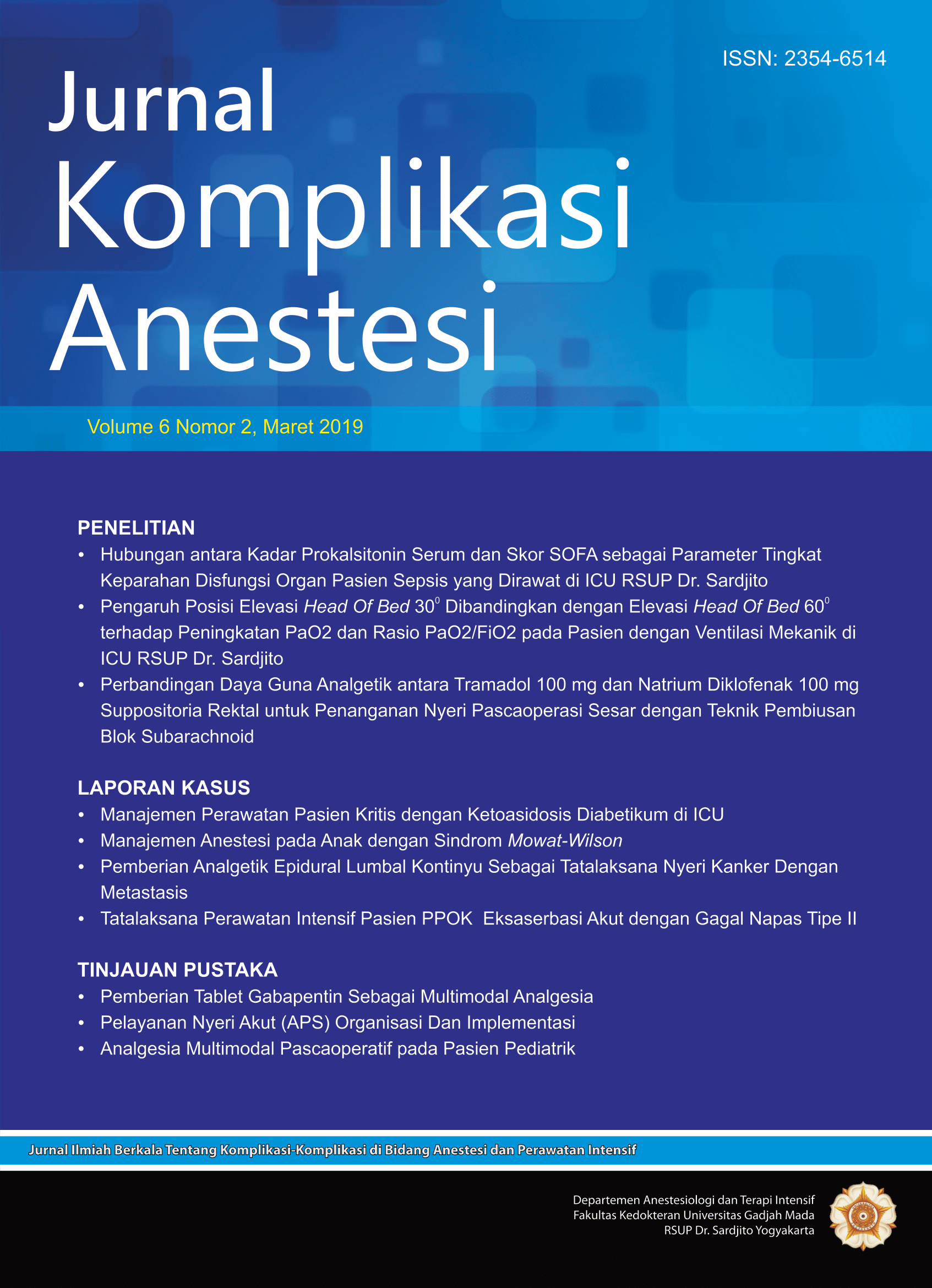Layanan Nyeri Akut Pascaoperasi: Organisasi dan Implementasi
Abstract
Acute pain is pain of recent onset, limited duration and usually related to a pathological process, disease,
or injury. The experience of acute pain is universal, but hospital inpatients frequently suffer severe pain as
a result of surgery, trauma or medical illness. In the hospital, two thirds of patients experience pain during
their admission. Within the surgical population, where the noxious stimulus is well defined and systems are in place to manage acute pain, almost 60% of patients experience severe pain in the postoperative period with a marked negative impact on health-related quality of life.
The presence of Acute Pain Service (APS) including regional anesthesia services, has increased the awareness of patients and medical professionals that proper pain management in perioperative period is important to enhance patient’s well-being. A dedicated team, which aspires for excellence and good clinical governance, and appropriate organizational structure, will definitely help in achieving a pain-free hospital stay, especially for the surgical patients.

Copyright (c) 2019 Sudadi, Mahmud, Nugraha Septian Bahrun

This work is licensed under a Creative Commons Attribution-NonCommercial-ShareAlike 4.0 International License.
The Contributor and the company/institution agree that all copies of the Final Published
Version or any part thereof distributed or posted by them in print or electronic format as permitted herein will include the notice of copyright as stipulated in the Journal and a full citation to the Journal.
















